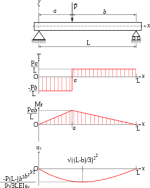Teachers often use real-world examples in math class, the researchers said. In some classrooms, for example, teachers may explain probability by pulling a marble out of a bag of red and blue marbles and determining how likely it will be one color or the other.
But students may learn better if teachers explain the concept as the probability of choosing one of n things from a larger set of m things, Kaminski said.
The issue can also be seen in the story problems that math students are often given, she explained. For example, there is the classic problem of two trains that leave different cities heading toward each other at different speeds. Students are asked to figure out when the two trains will meet.
“The danger with teaching using this example is that many students only learn how to solve the problem with the trains,” Kaminski said.
“If students are later given a problem using the same mathematical principles, but about rising water levels instead of trains, that knowledge just doesn’t seem to transfer,” she said.

